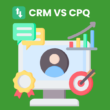Table of Contents Show
Learn to evaluate the success potential of your go-no-go decisions and turn risks into opportunities with our comprehensive guide.
Why Decision Evaluation Is Important?
Breaking down the significance of rigorous evaluation unfolds its indispensable role in decision-making. It enables managers to intelligently weigh options, bringing clarity to potential outcomes and the paths to achieve them.
A thorough evaluation is a manager’s crystal ball, identifying risks and opportunities while clarifying potential outcomes to drive strategic action toward success.
A comprehensive evaluation plays the role of a crucial soothsayer – predicting success. It diligently uncovers risks, highlights opportunities, and helps shape strategic action, tipping the balance in favor of success before a single resource is committed.
Understanding the Basics
Go No Go decisions aren’t complex. They’re strategic choices made after weighing potential return on investment against associated risks. You’re essentially deciding if the possible rewards outweigh the possible pitfalls.
In the evaluation of success potential, critical elements matter. These include market analysis, target audience assessment, and cost-benefit analysis, among others. Being thorough in these areas helps you make informed and productive decisions.
Measuring Success Potential
The process of evaluating success potential can be greatly improved with a deliberate focus on key metrics. Employee performance, customer satisfaction, and operational efficiency provide valuable data for this. Many enterprises overlook these areas, but metrics present factual evidence to determine if a venture is profitable.
Crafting an innovative approach to measure success potential in enterprises can become a game-changer. Consider predictive analytics, which utilizes historical data to anticipate future events, thus enabling better planning and lower risks.
Effective metrics capture insights about the company’s health and the competitive landscape. Revenue growth, market share, and gross profit margin are crucial indicators. A keen understanding of these numbers provides a clear perspective on the potential for business success.
Remember, the right metrics for one enterprise may not apply identically to another. Therefore, it’s important to deeply understand your business model, industry dynamics, and customer preferences. This nuanced approach enables a more accurate evaluation of the venture’s success potential.
Key Factors to Consider
Decisions about moving forward often hinge on key considerations: understanding the market and competition, assessing target audience interest, evaluating resource availability, and managing a thorough cost-benefit analysis. Each of these bases must be touched and evaluated.
Your reflection on crucial factors could profoundly influence the success potential. Delve deeper into the market, investigate competitors, analyze your target audience’s needs and wants, keep a close check on resources, and do a thorough cost-benefit analysis before making that Go No Go decision.
1. Market Analysis
Market analysis stands as an essential step in evaluating success potential. It provides a comprehensive view of the industry landscape, helping business leaders gauge the viability and profitability of their initiatives.
- Understanding current market conditions and trends
- Identifying the market size and potential growth
- Recognizing key market players and their strategies
- Noting customer preferences and behaviors
- Predicting future market shifts and scenarios
2.Competitor Research
Competitor research is a vital step in the ‘Go No Go’ decision process. This exploratory task provides invaluable insights into your market standing, enabling you to gauge your project’s success potential effectively!
- Identify strengths and weaknesses of competitors
- Understand competitor strategies
- Identify market trends and customer preferences
- Understand possible challenges and threats
- Determine your unique proposition in the market
3.Target Audience Assessment
Understanding your target audience holds immense importance for a successful Go/No-Go decision. It provides insights into their needs, preferences and buying behavior, influencing the decision’s success potential.
- Identifying demographic details, technological savviness, and buying preferences of your audience.
- Understanding cultural, social, and personal factors that affect your audience’s decision-making process.
- Assessing the audience’s geographic location and its impact on the execution of the decision.
- Investigating potential audience pain points your decision might address.
- Evaluate the emotional standpoint of your audience and the effect it will have on your decision.
4.Resource Availability
Evaluating resource availability is a pivotal component in any go/no-go decision-making process. Knowing your current resources and capabilities can shape the outcome of your decision.
- Identify all tangible and intangible resources available
- Estimate the resources needed to undertake the venture
- Evaluate if your current resources can meet the demands
- Consider time as a crucial resource
- Examine future resource potentials
- Review the accessibility and dependability of your resources
- Analyze the effectiveness of resource allocation
- Look into the possibility of acquiring additional resources if necessary
5. Cost-Benefit Analysis
Responsibly approaching Go No Go decisions involves a critical assessment of projected financial benefits against costs – this is where Cost-Benefit Analysis comes in. It not only makes choices clear but provides an objective lens through which to evaluate potential success.
Its key contribution is quantifying results. Through a well-executed Cost-Benefit Analysis, the ambiguity about profitability vanishes, replaced with numerical results that tell a convincing story about a project’s prospects.
It mitigates risk in decision-making and paves the path for an informed choice. It helps businesses determine whether the reward outweighs the risk, making an essential contribution to evaluating success potential.
As cost-conscious entrepreneurs and managers, Cost-Benefit Analysis offers direct insight into whether a move is financially feasible. If applied judiciously, it can significantly elevate your decision-making process and business strategy.
6. Evaluating the Risks
Spotting potential pitfalls is a crucial aspect of the ‘Go No Go’ decision-making journey. Risk management strategies can help navigate uncertain terrain, minimizing negative impacts while capitalizing on potential opportunities.
Risk assessment plays a vital role in evaluating a project’s potential. By identifying fiscal and legal risks, along with possible hurdles, it can weigh up the viability of the outcome. The higher the risk, the greater the need for mitigation maneuvers.
7. Identifying Potential Obstacles
A crucial aspect to address in the ‘Go No Go’ decision is the identification of potential obstacles. Being proactive in spotting business hurdles paves the way for strategies that enable success in the face of adversity.
Evaluating success potential is akin to navigating a minefield; a strong focus on obstacle identification sharpens decision-making, streamlining the go/no-go process for ventures, and keeping them on a profitable path.
8. Assessing Financial Risks
Identifying the potential ethical angles to financial dealings is an inescapable determinant in making Go or No Go decisions. Unethical financial practices may jeopardize your business reputation and lead to legal repercussions.
Astutely gauging the financial risks and rewards becomes an expedient factor when evaluating the success potential. A venture providing higher returns may attract higher risk, it’s the balancing act that’s crucial.
Remember, in the quest for success, financial risks shouldn’t masquerade opportunities, nor opportunities should blindfold potential risks. Adopt an alert, balanced financial perspective – a cornerstone of shrewd decision-making.
9. Considering Legal and Regulatory Factors
Legal loopholes can spell disaster for any venture. In your Go No Go evaluation, address these by securing legal advice and performing a comprehensive review. Oversight can lead to lawsuits, harming your business both financially and reputationally.
Remember that every industry has its specific regulations. Compliance is not optional but a critical success factor. Failing to comply may result in substantial penalties, tarnished reputation, and ultimately, business failure.
Never underestimate the complexities of legal and regulatory landscapes. They evolve, and so should your knowledge about them. Regular updates and checks can ensure you’re on the right side of regulations.
Regulatory compliance provides a framework for business operations, outlining potential pitfalls. It also brings predictability, which can be invaluable in decision-making. Having a clear path ensures that your Go No Go decision is both informed and legally sound.
10. Calculating Return on Investment
Streamlining the path of profitability is crucial. By calculating ROI, we unveil where to invest or back off—a vital element in the Go No Go decision-making.
Decoding the ROI factor isn’t a mere gamble. It’s a predictable element that deals with actual figures, helping to determine the effectiveness and potential of success in your venture.
11. Quantitative Analysis
Quantitative analysis shines bright because direct, numerical evidence does not lie. Through it, we’re able to delve into empirical facts, making projected success clearer and more solid.
Engaging in a quantitative analysis uncovers pivotal data points and trends. These provide the integral basis for impacts, risks, and returns – forming a potent foundation for Go No Go decisions.
Evaluation without the power of numbers is like sailing in the dark. Quantitative analysis navigates the decision-making process and shapes a robust, confident future for your venture.
12.Qualitative Analysis
Diving deep into qualitative data is indispensable in the go/no-go decision-making process. It provides unique insights beyond numbers, enriching your understanding of the situation. Such deep analysis maximizes the potential for success by highlighting impactful yet less obvious factors.
The texture of the market, customer sentiments, and abstract elements from competitor patterns – are a few out of many qualitative data insights. They play a crucial role in determining the success potential of the project, combining with quantitative data to create a holistic picture.
The sheer essence of qualitative analysis is in its ability to reveal the ‘why’ behind the data. This paves the ground for an informed decision, guiding you to a more profound understanding of whether to move forward or revoke your project.
Moreover, conducting a thorough qualitative analysis can save potential losses in the long run. It provides a human perspective, revealing possible issues and challenges lurking below surface-level observations. A decision grounded on qualitative data is less likely to overlook critical issues.
13. Making an Informed Decision
Understanding the dynamics and exercising prudence in decision-making enhances your venture’s success potential. Information-driven decisions lead to efficient management, better resource allocation, and ultimately, business success.
Information-fueled decisions propel businesses toward success. A venture rooted in fact-based decisions can better navigate industry challenges, exploit opportunities, and make strides in organizational productivity and growth.
The success of any enterprise largely depends on informed decision-making. It leverages the information at hand, driving actions that align with organizational goals, and ensuring sustained growth and profitability.
Informed decision-making is a catalyst for success in any business venture. It paves the way for better risk assessment, improved strategies, and informed actions, nurturing an atmosphere conducive to growth.
The adoption of informed decision-making techniques is integral for maximizing the success potential of your venture. It provides a practical roadmap for progress, facilitating sound tactical moves and strategic management.
14. Using Decision-Making Frameworks
Augmenting success potential is achievable with effective decision-making frameworks, as these tools lend objectivity, structure, and consistency to the process. Frameworks like SWOT Analysis or Decision Matrix can help visualize the challenge, consider every aspect, and drive better decisions.
Managers and entrepreneurs streamline Go No Go decisions by leveraging these frameworks. This approach takes into account both intuitive judgment and objective analysis, making it easier to arrive at conclusions that align with preset goals and future business trajectories.
15. Seeking Expert Advice
Seeking the advice of experts can significantly enhance your Go No Go decisions. Their seasoned perspectives provide rare clarity, insulating you against lurking challenges.
Professionals can provide key insights, having worked on similar projects or faced related dilemmas. They provide answers based on practical experience.
Consulting experts can be a game-changer in evaluating success potential. Their tactical advice can prevent unanticipated pitfalls and enhance the validity of the decision.
Remember, expert advice not only aids in making informed Go No Go decisions but fosters a learning environment. It’s an investment with long-term returns, always worth considering.
Conclusion
No Go decisions are essential for managers and entrepreneurs who want to maximize their productivity and achieve success in their ventures.
Making informed decisions also involves seeking the advice of experts. Professionals who have experience with similar projects can provide valuable insights and prevent unforeseen challenges.
More resoucres for you:










